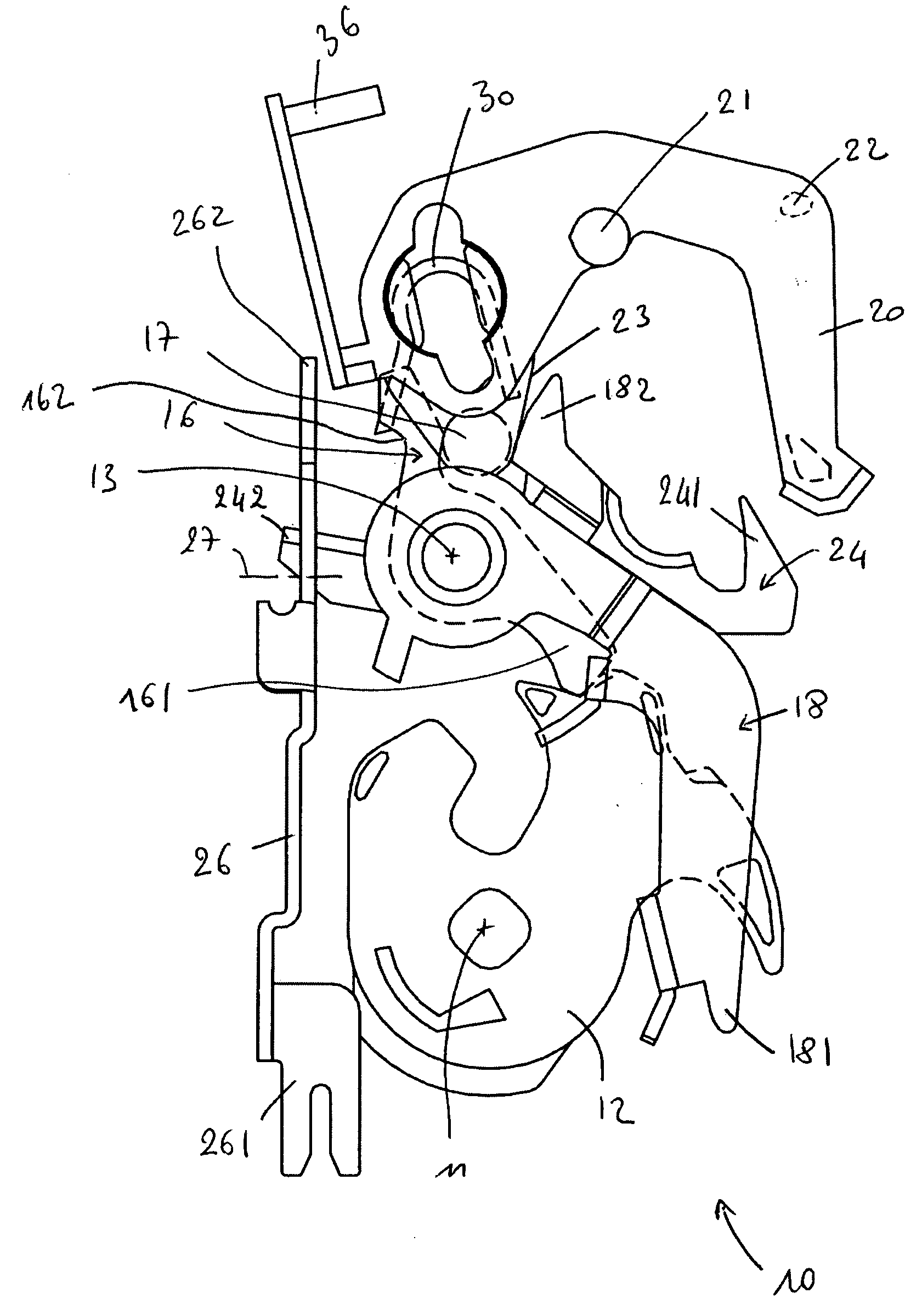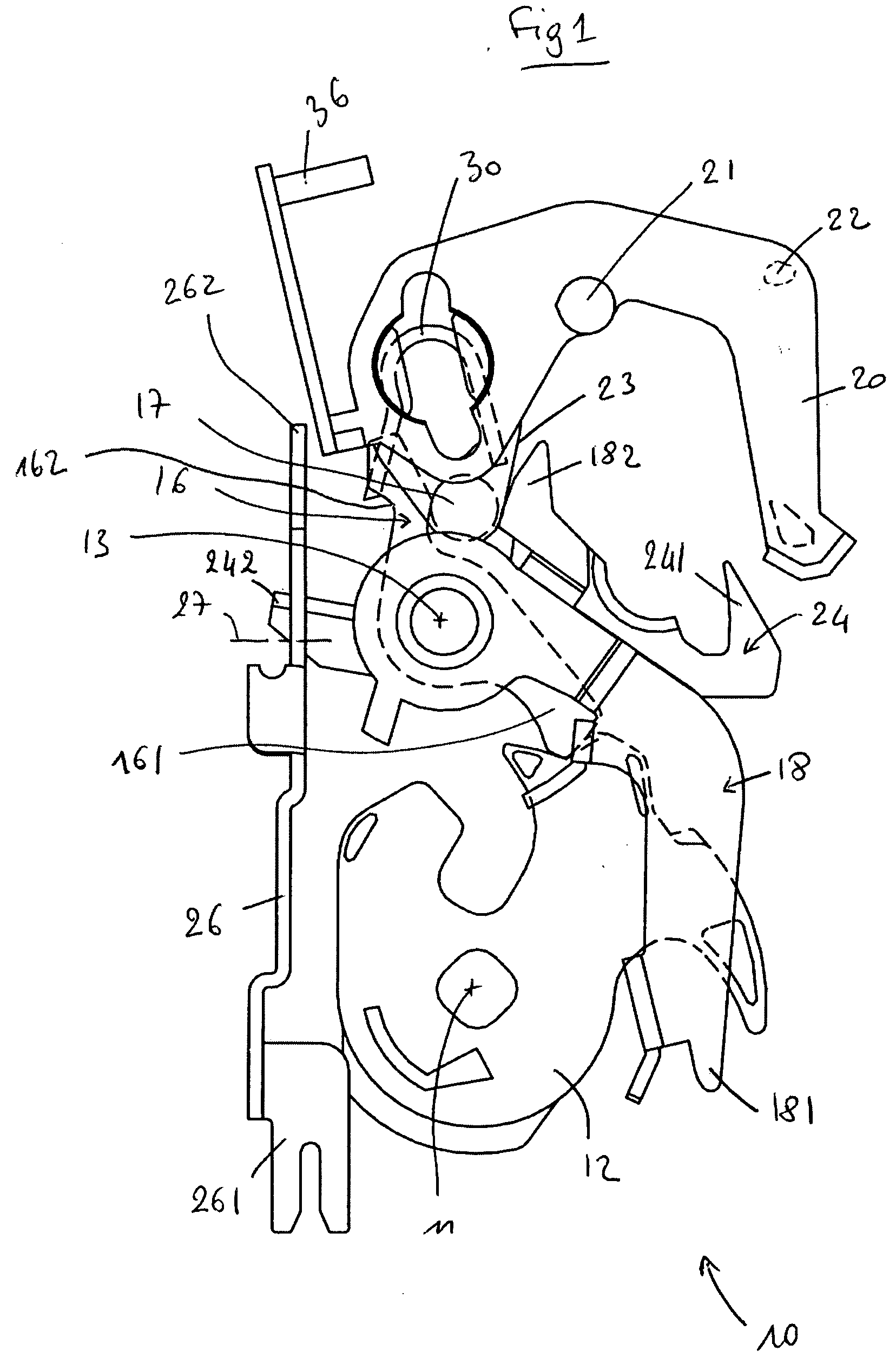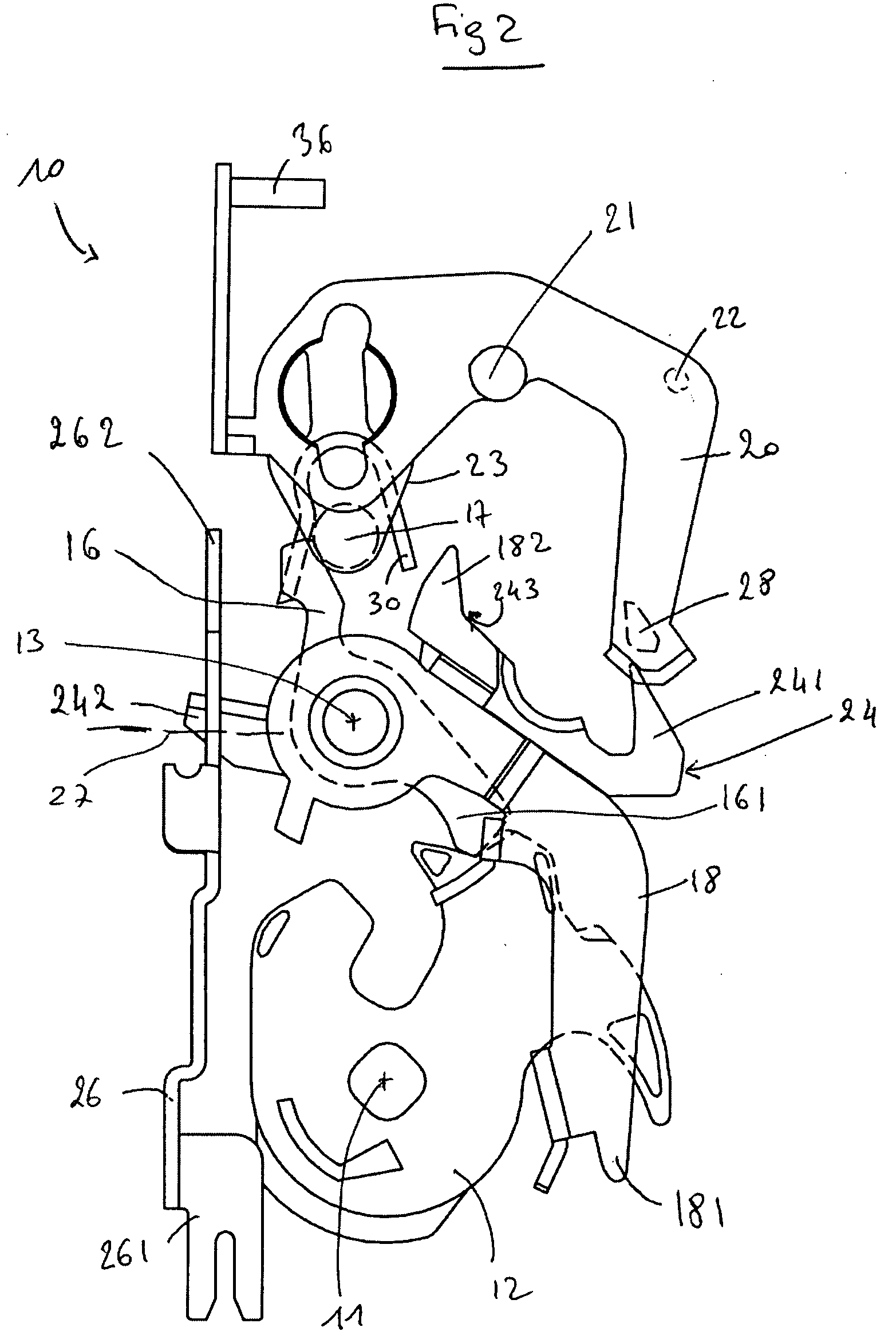Motor vehicle latch
a technology for motor vehicles and latches, applied in the direction of fastening means, non-mechanical controls, power transmission/actuator features, etc., can solve the problems of difficult control of the expansion of the springs to obtain stable kinematic positions, the weighty and costly of the latches, and the inability to achieve the precise stop position relative to the precision required of the mechanism to be used
- Summary
- Abstract
- Description
- Claims
- Application Information
AI Technical Summary
Problems solved by technology
Method used
Image
Examples
first embodiment
[0057] The operation of the latch 10 will now be described. the latch 10 can change from a first state to a second state by moving the mobile part 40 in the first direction. During this change in state, the stop 46 remains in the first position. Moving the mobile part 40 causes a change in the position of the locking arm 20, which changes the state of the latch 10.
[0058] The latch 10 can then change from the second state to a third state. First of all, in order to do this, the mobile part 40 is moved in the second direction to cause the stop 46 to move from the first position to the second position. Secondly, the mobile part 40 is moved in the first direction, and the stop 46 then remains in the second position. The last movement of the mobile part 40 causes a change in the position of the locking arm 20, which changes the state of the latch 10.
[0059] The latch 10 can then change from the third state to the first state. In order to do this, the mobile part 40 is moved in the secon...
second embodiment
[0060] the latch 10 can change from a first state to a second state by moving the mobile part 40 in the first direction. During this change of state, the stop 46 is moved from the second position to the first position. The movement of the mobile part 40 causes a change in the position of the locking arm 20, which changes the state of the latch 10.
[0061] The latch 10 can then change from the second state to a third state. First, the mobile part 40 is moved in the second direction. The movement of the mobile part 40 causes the movement of the stop 46 from the first position to the second position. Secondly, the mobile part 40 is moved in the first direction, and the stop 46 then remains in the second position. The last movement of the mobile part 40 causes a change in the position of the locking arm 20, which changes the state of the latch 10.
[0062] The latch 10 can then change from the third state to the first state. In order to do this, the mobile part 40 is moved in the second di...
PUM
 Login to View More
Login to View More Abstract
Description
Claims
Application Information
 Login to View More
Login to View More - R&D
- Intellectual Property
- Life Sciences
- Materials
- Tech Scout
- Unparalleled Data Quality
- Higher Quality Content
- 60% Fewer Hallucinations
Browse by: Latest US Patents, China's latest patents, Technical Efficacy Thesaurus, Application Domain, Technology Topic, Popular Technical Reports.
© 2025 PatSnap. All rights reserved.Legal|Privacy policy|Modern Slavery Act Transparency Statement|Sitemap|About US| Contact US: help@patsnap.com



